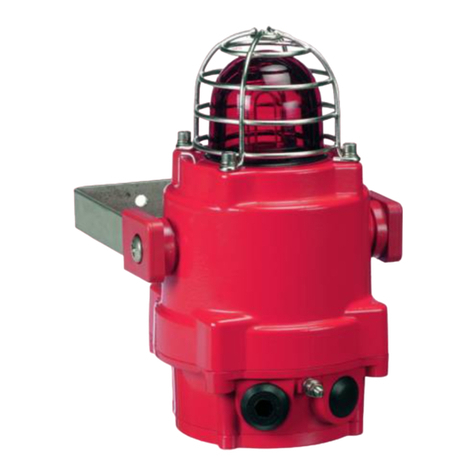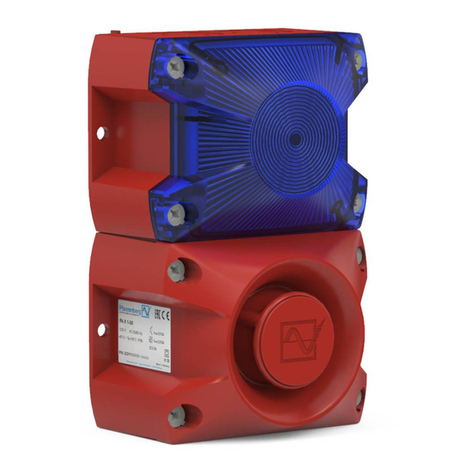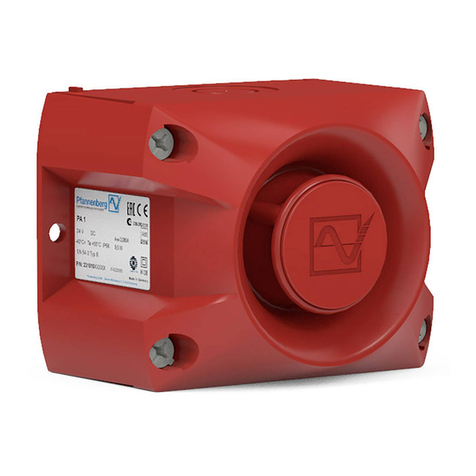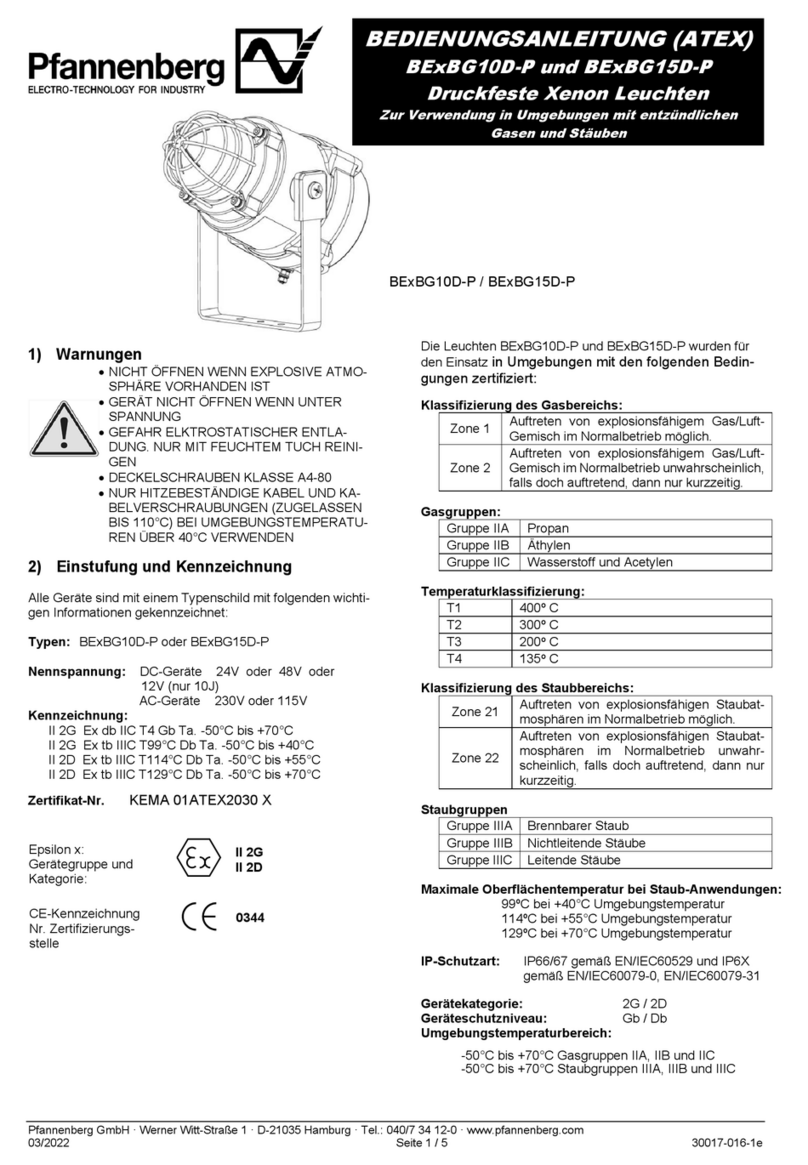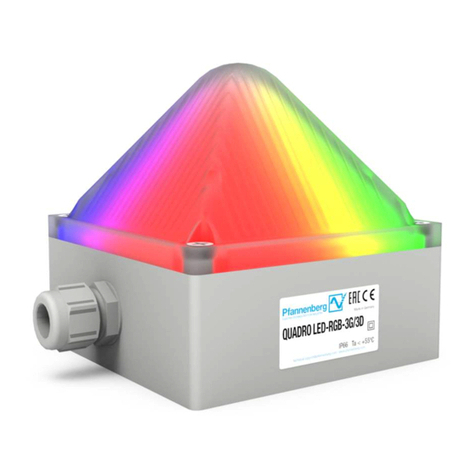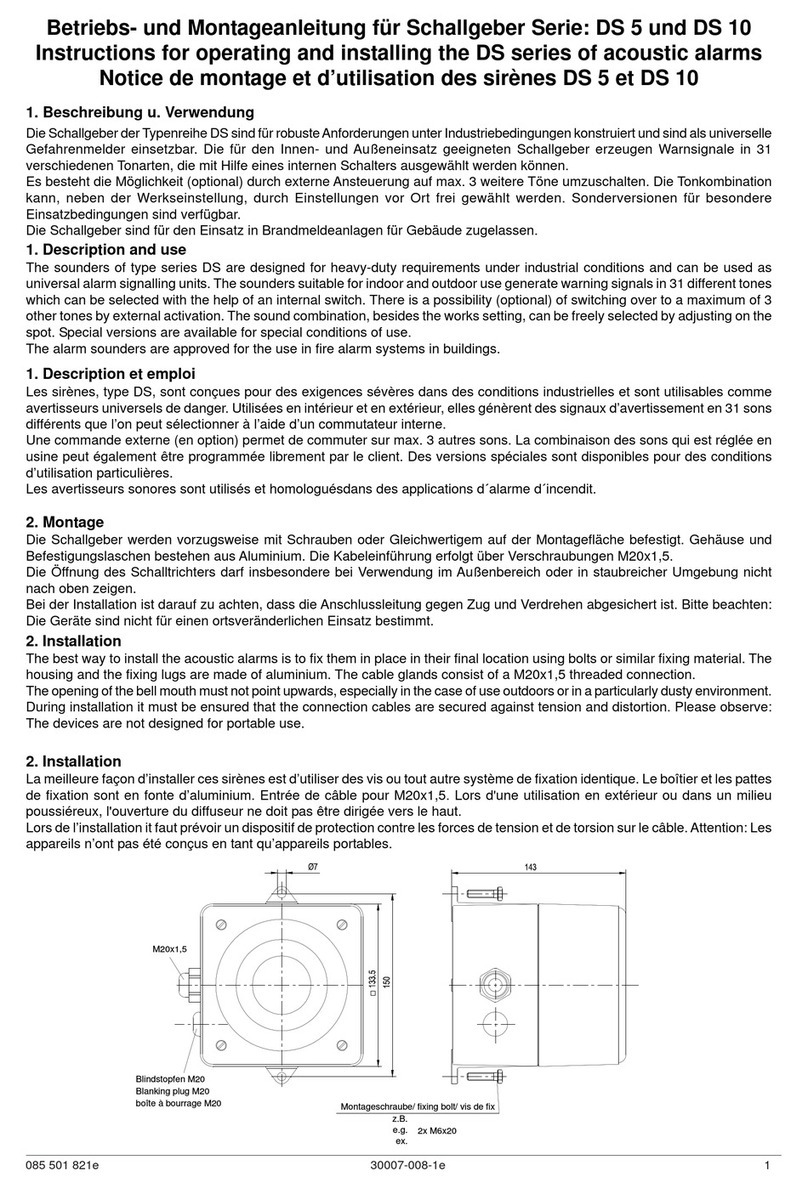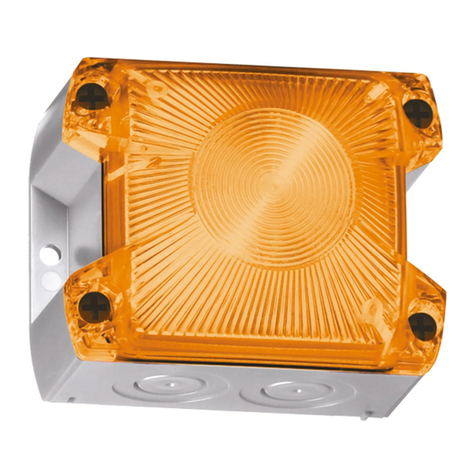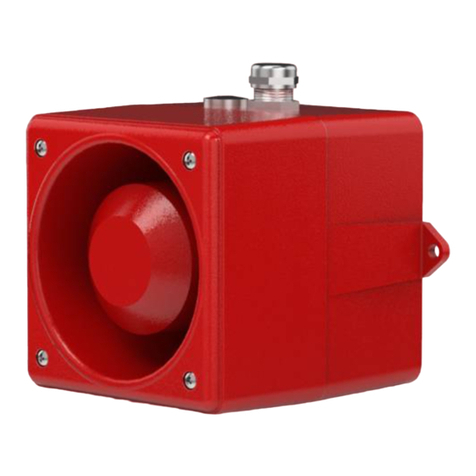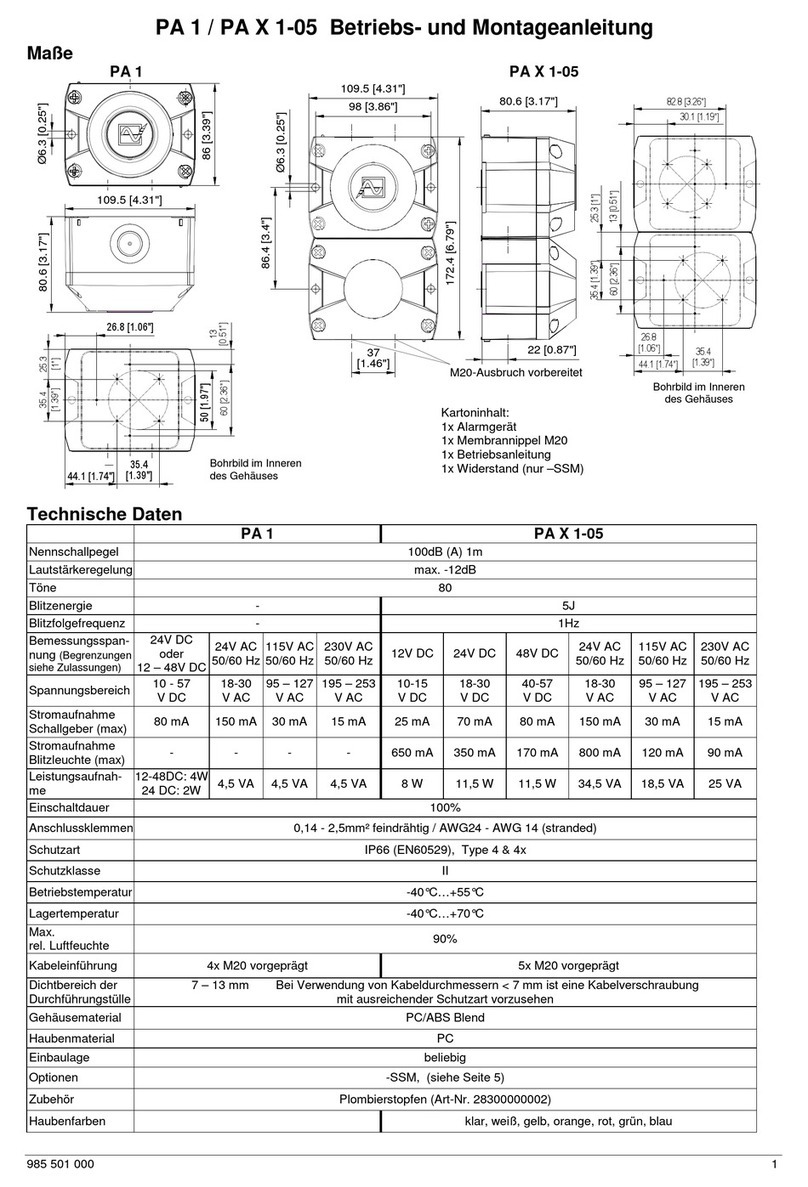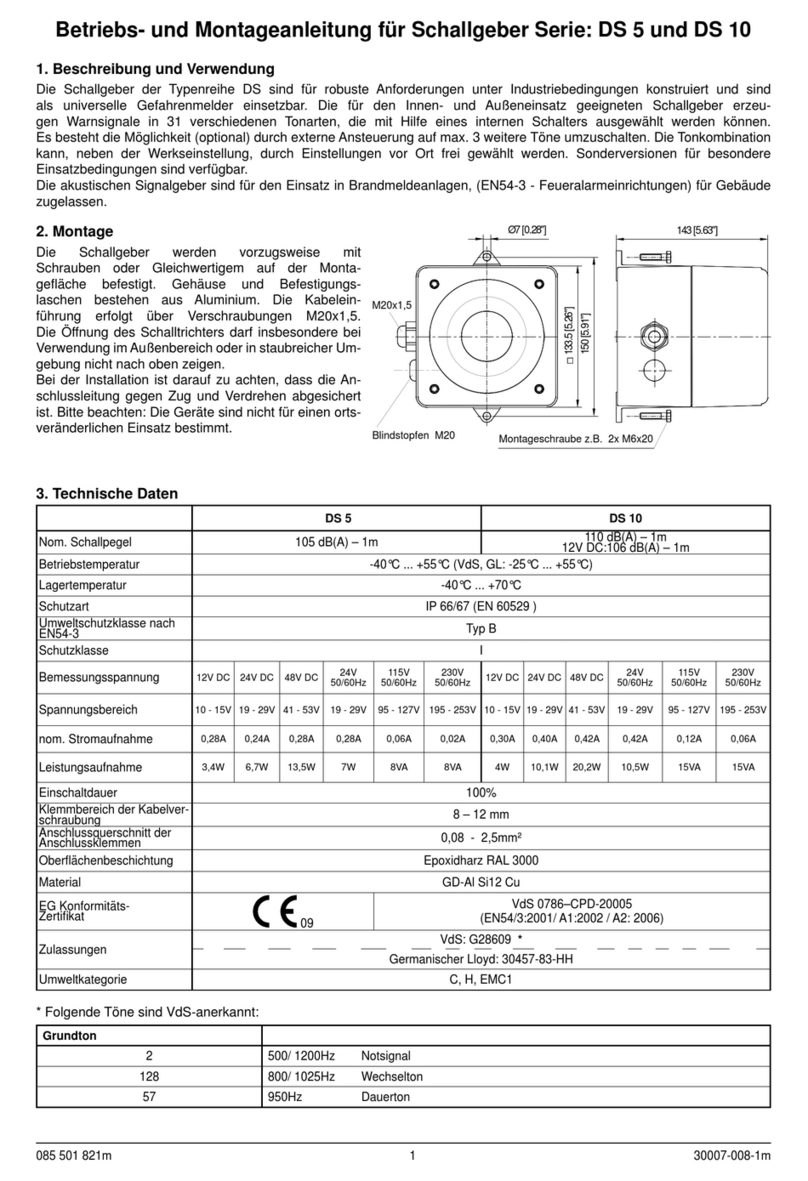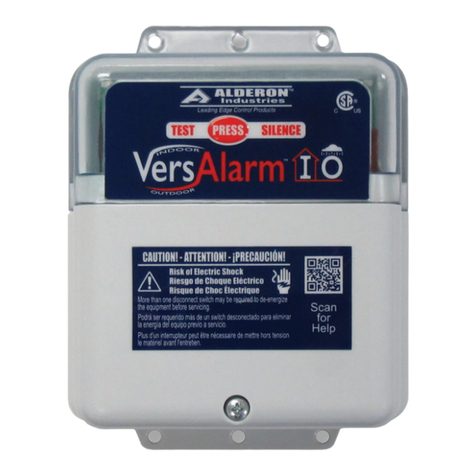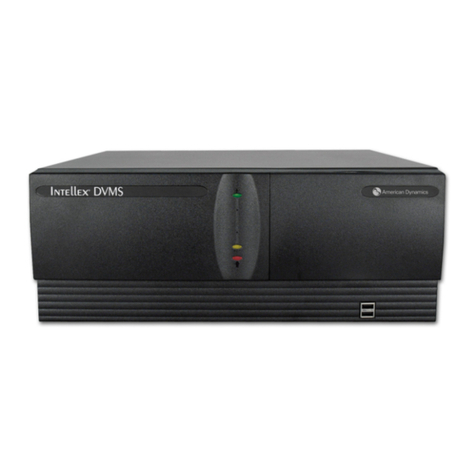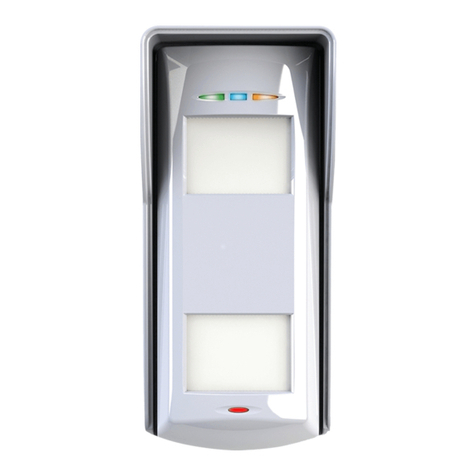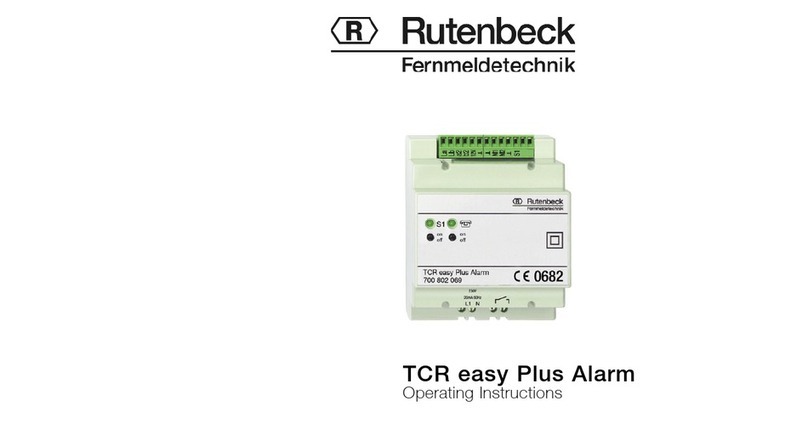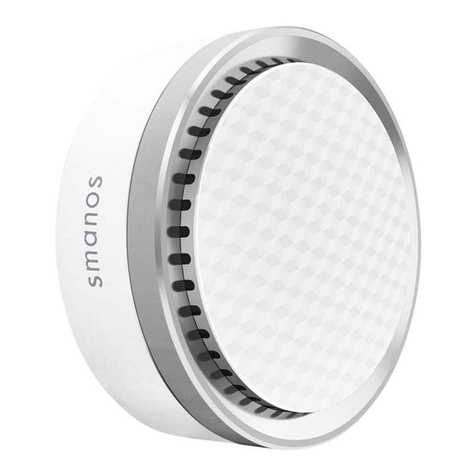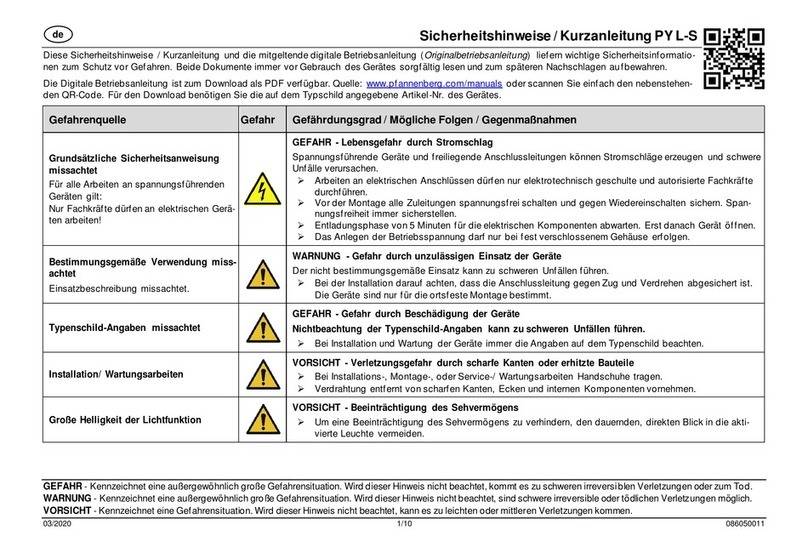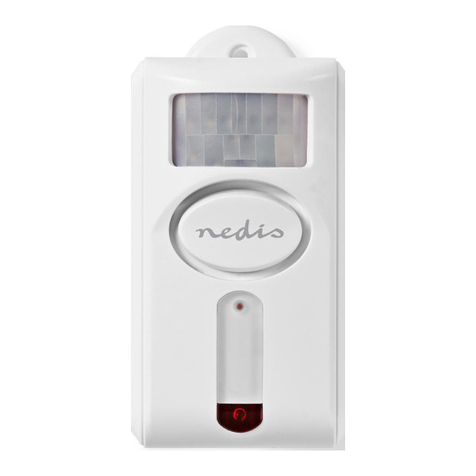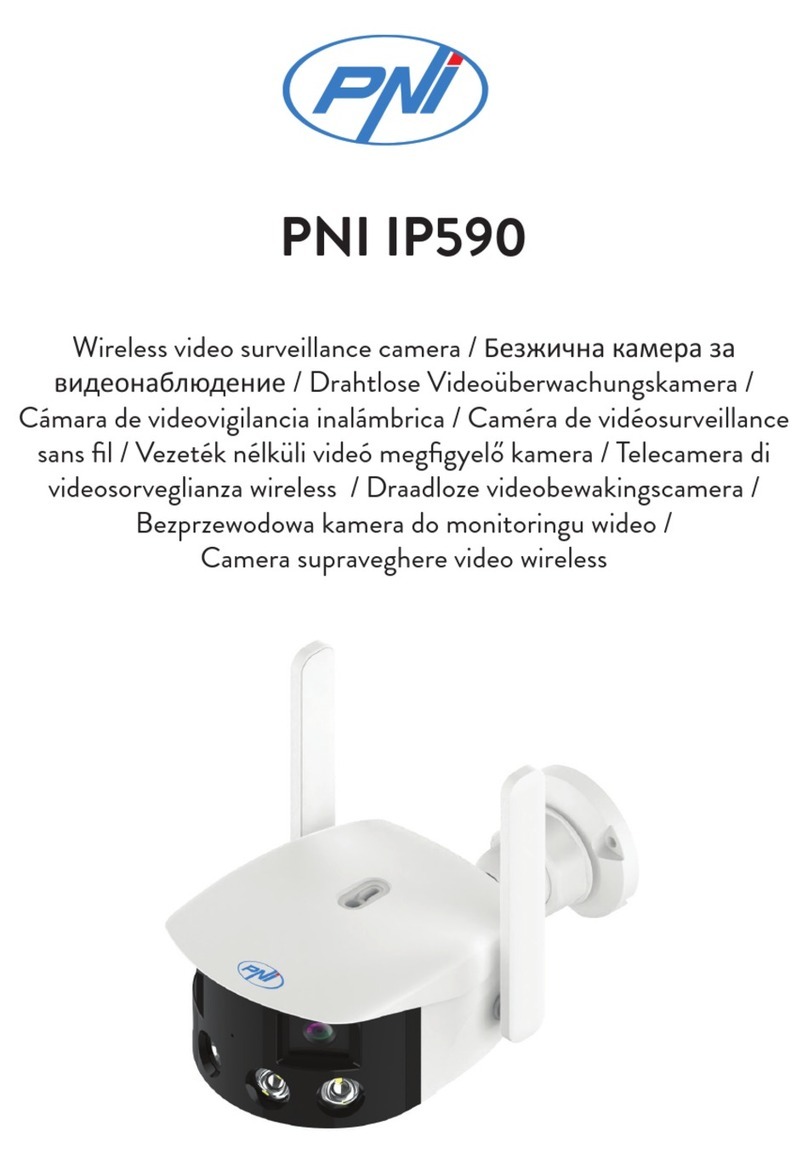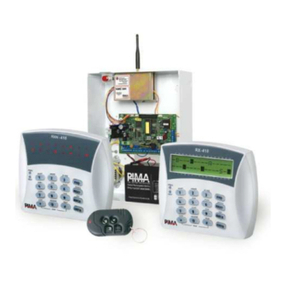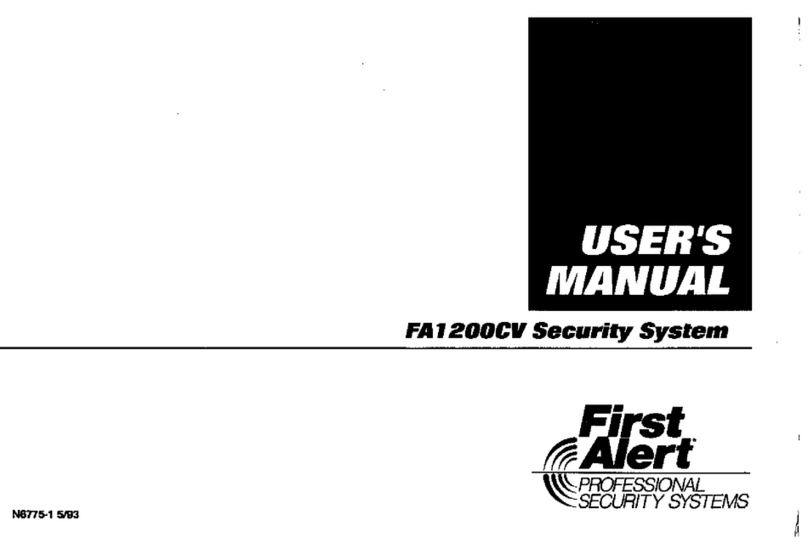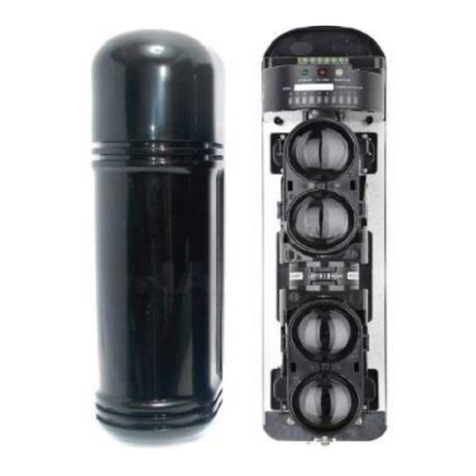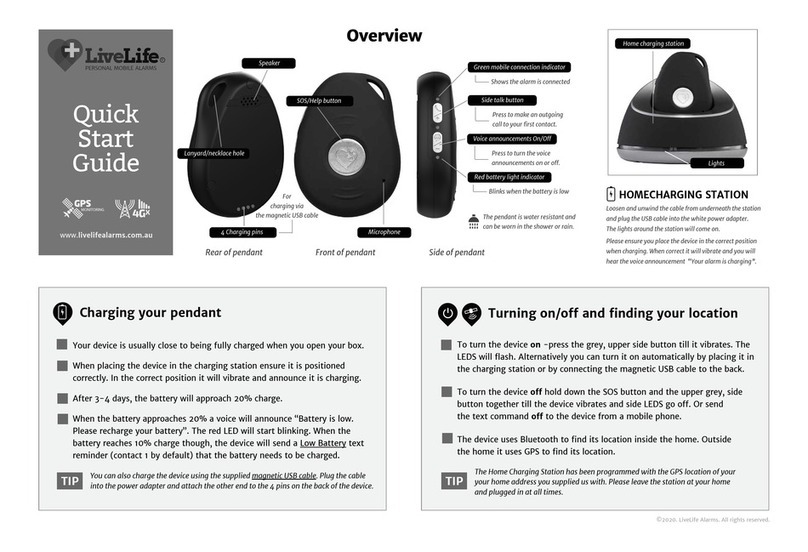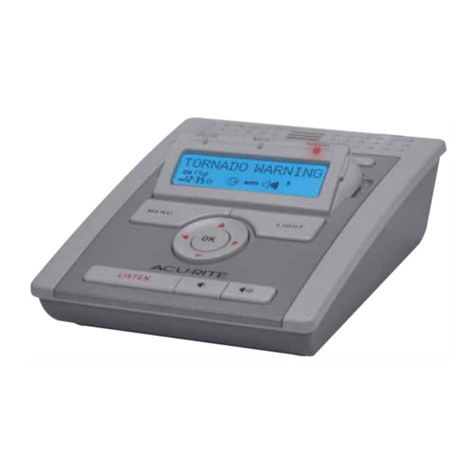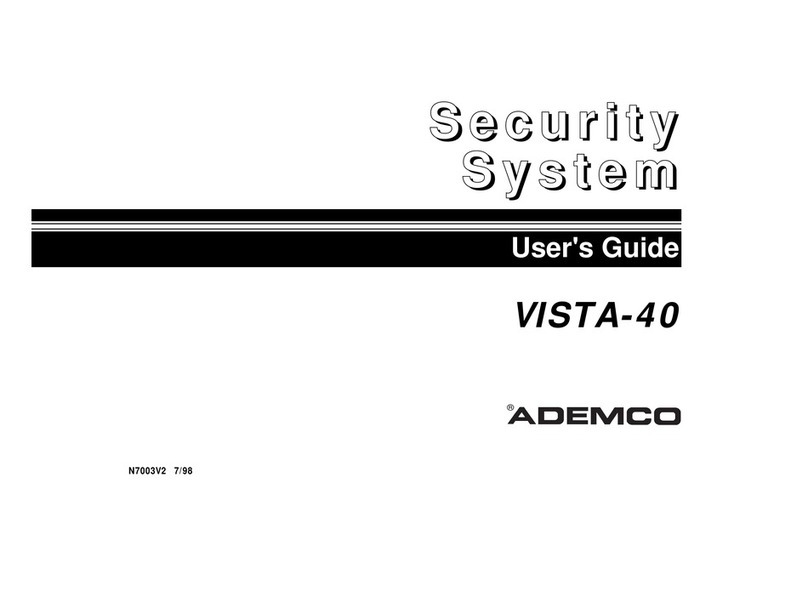
Pfannenberg GmbH · Werner Witt-Straße 1 · D-21035 Hamburg · Tel.: 040/7 34 12-0 · www.pfannenberg.com
03/2022 Seite 3 / 5 30017-015-1e
8) Spannungsversorgung
Es ist wichtig, das Gerät an eine geeignete Spannungsver-
sorgung anzuschließen. Sie muss so gewählt werden, dass
für alle am System angeschlossenen Geräte eine ausrei-
chende Kapazität der Stromversorgung zur Verfügung steht.
Folgende Tabelle zeigt sowohl den von verschiedenen
Schallgebern aufgenommenen Strom als auch die maximale
Spannung, bei der die Schallgeber betrieben werden kön-
nen:
Der Eingangsstrom ist abhängig vom Spannungsniveau. Die
aufgeführten Stromwerte gelten für die Nennspannung.
9) Auswahl von Kabeln, Kabelverschraubun-
gen, Verschlusselementen und Adaptern
Bei der Auswahl des Kabelquerschnitts müssen der Ein-
gangsstrom jedes Geräts (siehe obige Tabelle), die Anzahl
der angeschlossenen Geräte und die Länge der Kabel be-
rücksichtigt werden. Die Kabel müssen eine ausreichende
Kapazität bieten, um alle an die Leitung angeschlossenen
Geräte mit dem erforderlichen Eingangsstrom zu versorgen.
Bei Umgebungstemperaturen über +40ºC kann an den Ka-
belverschraubungen eine Temperatur von über +70ºC ent-
stehen. Daher müssen hitzebeständige Kabel und Kabelver-
schraubungen mit einer Temperaturbeständigkeit von min-
destens +110ºC verwendet werden.
Das Gerät verfügt über zwei Kabeldurchführungsbohrungen
mit M20 x 1,5 Gewinde. Um die IP-Schutzart und die Schutz-
klasse zu gewährleisten für die Installation nur geeignete
ATEX-zertifizierte Kabelverschraubungen bzw. Verschluss-
stopfen gemäß EN / IEC60079-14 verwenden.
Ist ein hoher IP-Schutz erforderlich, müssen geeignete Dich-
tungsscheiben unter den Kabelverschraubungen bzw. Ver-
schlussstopfen angebracht werden.
Für die Verwendung in explosionsgefährdeten Staubat-
mosphären muss eine IP-Schutzart von mindestens IP6X ge-
währleistet sein.
Die Geräte können mit folgenden Adaptern ausgerüstet wer-
den:
M20 auf ½” NPT
M20 auf ¾” NPT
M20 auf M25
Verschlussstopfen nicht auf Adaptern anbringen. Nur direkt
auf die Kabeldurchführungsbohrungen montieren.
Alle verwendeten Adapter müssen geeignet und ATEX-zerti-
fiziert sein.
10) Erdung
Sowohl AC- als auch DC-Geräte müssen mit einem Erdungs-
anschluss versehen sein. Die Geräte verfügen über Innen-
und Außenerdungsanschlüsse an der Anschlusskammer.
Abb. 3 Deckel Innenansicht
Bei Verwendung des internen Erdungsanschlusses ist si-
cherzustellen, dass die M4-Edelstahl-Unterlegscheibe sich
zwischen dem Erdungskabel und dem Gehäuse befindet.
Den internen Erdungsanschluss an der internen Erdungs-
klemme im Boden des Gehäuses herstellen. Hierfür mit ei-
nem Ringkabelschuh die Erdungsleitung unter der Erdungs-
klemme befestigen. Die Erdungsleitung soll mindestens in
Größe und Bemessung den Stromanschlussleitungen ent-
sprechen. Die M4-Erdungsschraube mit 1Nm anziehen.
Den externen Erdungsanschluss am M5-Erdungsbolzen her-
stellen. Hierfür mit einem Ringkabelschuh die Erdungsleitung
am Erdungsbolzen befestigen. Der Querschnitt der externen
Erdungsleitung soll mindestens 4 mm² betragen. Die Er-
dungsmutter mit 3 Nm anziehen. Die externe Erdungs-
klemme so weit festziehen, dass sich der Bolzen nicht löst.
Das Erdungskabel so verlegen, dass es sich nicht verdreht
und durchhängt.
11) Kabel-Anschlüsse
Die elektrischen Anschlüsse sind an den Klemmenleisten auf
der Platine im druckfesten Gehäuse vorzunehmen. Siehe
Kapitel 7 dieses Handbuchs für den Zugang zum druckfesten
Gehäuse.
An jede Anschlussstelle der Klemme kann eine Leitung mit
einem Querschnitt zwischen 0,5 mm² und 2,5 mm² ange-
schlossen werden. Bei Anschluss von Ein- und Ausgangslei-
tung kann die 2-polige L/N bzw. +/- -Klemme verwendet wer-
den. Bei Anschluss von zwei Leitungen an einen Klemman-
schluss darf die Summe der Leitungsquerschnitte maximal
2,5 mm² betragen. Die Leitungen 8mm abisolieren. Leitun-
gen können mit Aderendhülsen versehen werden. Die
Schrauben der Klemmen müssen mit einem Anzugsdrehmo-
ment von 0,45 Nm (5 Lb-in) angezogen werden. Beim An-
schließen der Leitungen an die Klemmen muss sorgfältig da-
rauf geachtet werden, diese so zu verlegen, dass sie beim
Einsetzen des Deckels in das druckfeste Gehäuse keinen
übermäßigen Druck auf die Klemmenblöcke ausüben. Insbe-
sondere bei Leitungen mit großem Querschnitt wie 2,5 mm²
ist dies von hoher Wichtigkeit.
Typen: Nennspan-
nung
Eingangs-
strom
gangsspan-
BExBG05D-P 12Vdc 750 mA 14 V
BExBG05D-P 24Vdc 300 mA 28 V
BExBG05D-P 48Vdc 180 mA 54 V
BExBG05D-P 115Vac 140 mA 126 V
BExBG05D-P 230Vac 55 mA 253 V
Externer Erdungsan-
schluss
Erdungs-
anschluss
Anschluss für
interne Poten
-
g
n










